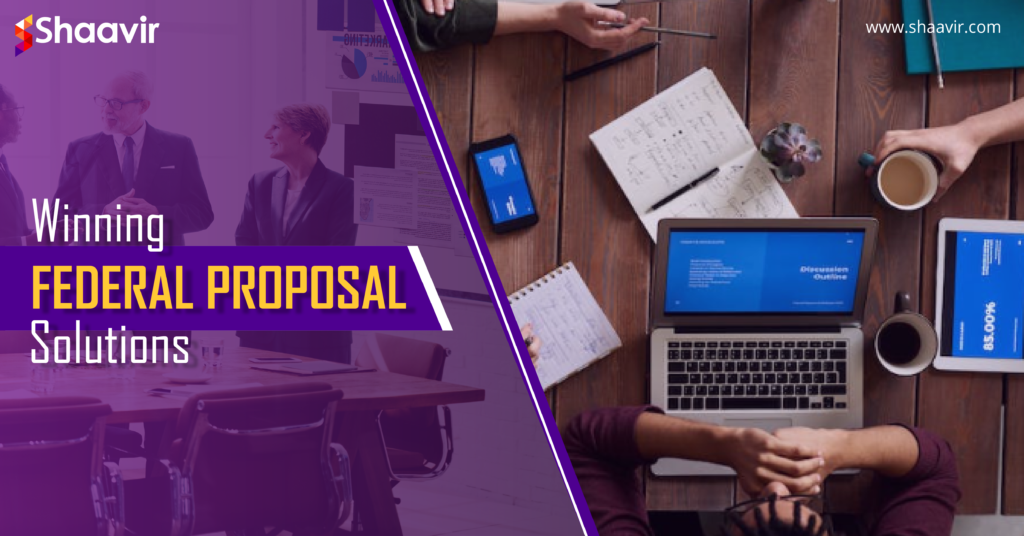In the competitive realm of federal proposals, crafting a winning solution is paramount to securing funding and making a real impact. A well-structured and persuasive solution demonstrates your understanding of the problem, the feasibility of your approach, and the potential benefits for the federal agency. To ensure your solution stands out and elevates your proposal to the top of search engine rankings, follow these proven strategies:
- Thoroughly Understand the Problem
Before delving into solutions, ensure you have a deep understanding of the problem you’re addressing. Thoroughly review the agency’s request for proposal (RFP) or problem statement, identifying the specific challenges, pain points, and desired outcomes. This deep understanding will guide you towards crafting effective solutions tailored to the problem at hand.
- Align with Agency Goals and Priorities
Align your proposed solutions with the federal agency’s mission, goals, and current funding priorities. Research the agency’s recent projects, initiatives, and funding trends to identify areas where your solutions can make a significant contribution. This alignment demonstrates your understanding of the agency’s priorities and your commitment to addressing their specific needs.
- Employ Proven Methodologies and Frameworks
Utilize established methodologies and frameworks to structure your solutions. This provides reviewers with a clear understanding of your approach and enhances the credibility of your proposal. For example, if you’re proposing a technology solution, consider using the NIST Risk Management Framework to demonstrate your commitment to cybersecurity and risk mitigation.
- Provide Evidence of Feasibility and Effectiveness
Substantiate your proposed solutions with strong evidence of feasibility and effectiveness. This could include case studies from previous projects, pilot test results, or expert testimonials. Providing concrete examples builds trust with reviewers and reinforces your claim that your solutions can deliver tangible results.
- Quantify Impact and Value
Don’t just describe the benefits of your solutions; quantify their impact and value. Use metrics, data, and cost-benefit analyses to demonstrate the tangible improvements your solutions will bring. This quantification highlights the return on investment for the federal agency and strengthens your proposal’s appeal.
- Address Potential Challenges and Risks
Anticipate potential challenges and risks associated with your proposed solutions. Acknowledge these issues and provide clear mitigation strategies to demonstrate your proactive approach to problem-solving. This transparency instills confidence in reviewers and reinforces your ability to navigate potential roadblocks.
- Emphasize Collaboration and Partnerships
If your proposal involves collaboration with other organizations or stakeholders, clearly outline the roles and responsibilities of each partner. Highlight the value of this collaboration and how it will enhance the effectiveness of your proposed solutions. This emphasis on teamwork demonstrates your ability to build strong partnerships and leverage diverse expertise.
- Tailored to Specific Agency Requirements
Avoid generic solutions and instead, tailor your approach to the specific requirements of the federal agency. Consider the agency’s culture, technological infrastructure, and budget constraints when designing your solutions. This customization showcases your understanding of the agency’s unique context and increases the relevance of your proposal.
- Optimize for Search Engines
Incorporate relevant keywords throughout your proposal, ensuring they align with the language used in the agency’s RFPs and other relevant documents. Use long-tail keywords that reflect the specific nature of the problem and your proposed solutions.
- Seek Feedback and Iteration
Don’t hesitate to seek feedback from peers, experts, or proposal consultants to refine your proposed solutions. Their insights can help you identify areas for improvement, ensuring your solutions are feasible, impactful, and search engine optimized.
By adhering to these guidelines, you can craft compelling federal proposal solutions that effectively address the problem, demonstrate feasibility, and highlight the potential benefits for the federal agency. Remember, winning solutions are not just about technical expertise; they are also about understanding the agency’s needs, aligning with their priorities, and providing tangible value. With a well-structured and persuasive approach, you can elevate your proposal to the top of search engine rankings and increase your chances of securing funding.
